Nsukka’s influence is unmistakable. The best of those who have passed by that Fine Arts Department show a confidence, a focus and an understanding of art within contemporary discourses rarely seen in graduates from other institutions.
A few days ago I had the chance of expending some time with one of them: Ikechukwu Francis Okoronkwo, or Ike Francis, as he prefers to be called. We have known for a good number of years and, when we meet, we always have a good chat. Though he did his first degree in art at Port-Harcourt (1995), the years of his Masters (2001) at Nsukka had a determining influence on his approach to art making and his understanding of the role and place of the artist in society.
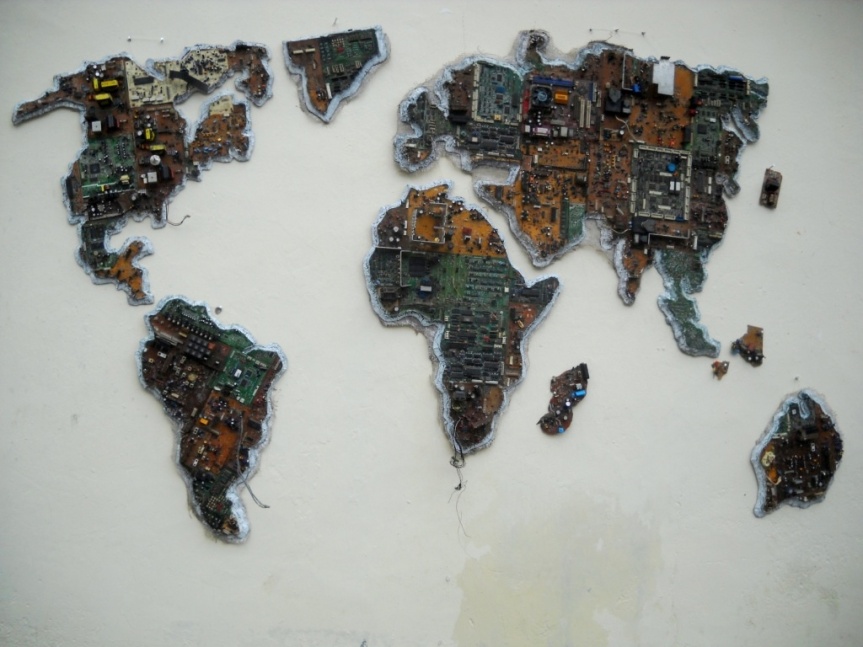
Like many others who had the opportunity of listening to and learning from El Anatsui, Chike Aniakor, Ola Oloidi and the rest at Nsukka, his work has been, for years, centred on issues, materials and society. Like a good number of his contemporaries at Nsukka he interested in the use of waste as material for his artistic experimentation. He is now working on a series of works that have as their focal point the Internet and the relations it generates. For almost a decade, he has been using motherboards, circuits and pieces from discarded computers and other electronic devices, incorporating them into two dimensional “pictorial” compositions or -more recently- using them as building blocks for fully three dimensional pieces.
There is big difference between his recent works and the ones I saw at Dak’Art four years ago. Painting on canvas has gradually disappeared and mixed media has almost completely taken over. But his four-piece work, “universal man” still uses pigments, lines and shapes that work as a pictorial vehicle for his concerns about man and society.
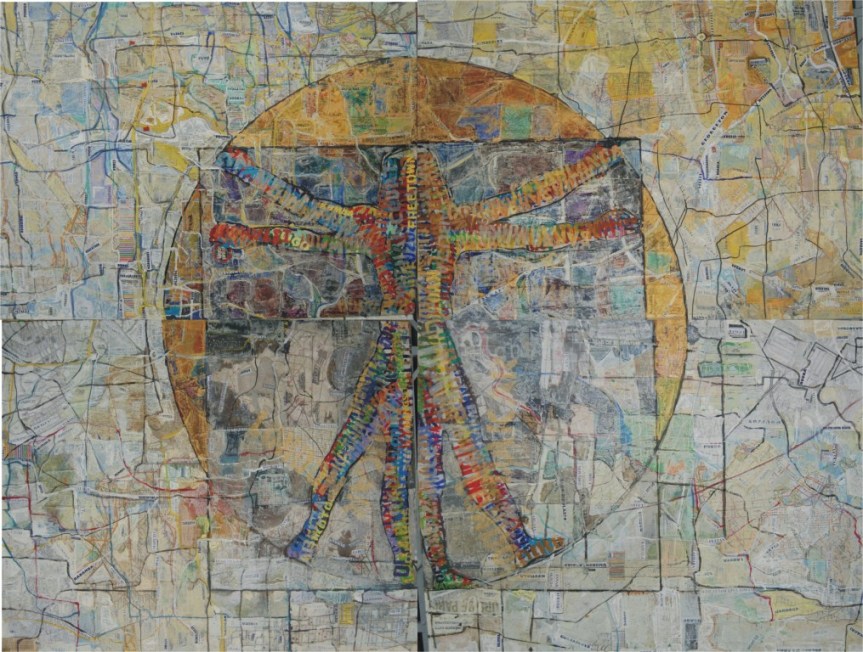
Since 2008 Ike is a lecturer at the Fine Arts and Design Department of the University of Port-Harcourt. Presently, he teaches three subjects: painting, drawing and mixed media. Being a lecturer and confronting students on a regular bases forces him to vocalize ideas and articulate thoughts. He is, definitely, quite adept at “explaining” his works, even if, at times, they do not fully succeed in embodying concepts.I say that, at times, they do not succeed, but it is remarkable that, often, they do.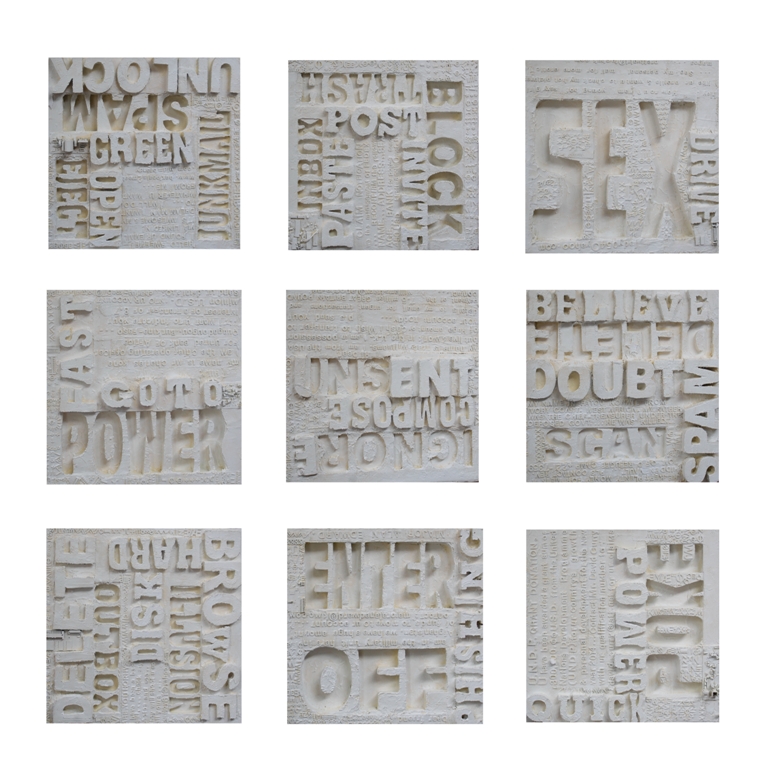
His use of stencilled letters is not as sharp and punchy as in Christopher Wool’s works, but they are able to communicate quite effectively. Few other artists in Nigeria can match him in this approach to art.
Two pieces attracted particularly my attention: “Of Black Mail and Black Boxes”, a work made of three square panels and nine hanging cubes, mostly black with some silvery hues and, especially, his installation titled “Power Tale” made of three polycarbonate boxes containing high relief idealized representations of three cities: New York, Dakar and Lagos.
While the work “Blank mails”, with its references to spam messages and unwanted mails marketing the unmarketable, is a clear and obvious piece, “Of Black Mails and Black Boxes” is a dark one, and not only because of the colour covering the reliefs; the chunks of coal, the barely legible references to fraud emails, the computer circuitry succeed in bringing to mind how technology can also be an instrument for dehumanizing activities. Ike Francis had tried the black charcoal before, but the results had not been so successful. The symbols of letters and numbers –with their rigidity and rationality- have a dominant presence that balances the organic and casual character of the coal, the randomly scattered electronic parts and the other small blocks that fill the piece; and all this, within the constricted confines of small square panels (just 60 x 60 cm). Even without the addition of the hanging cubes, the three panels successfully tell a story.
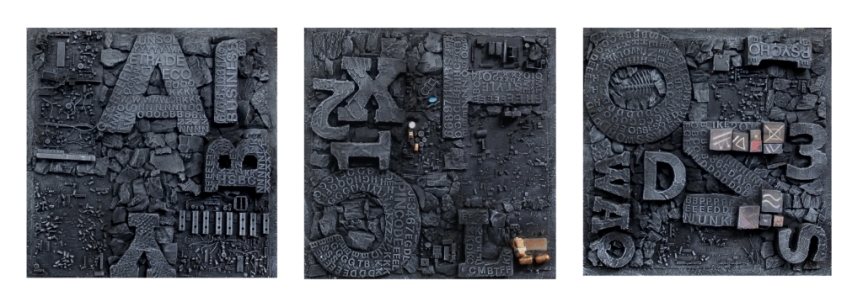
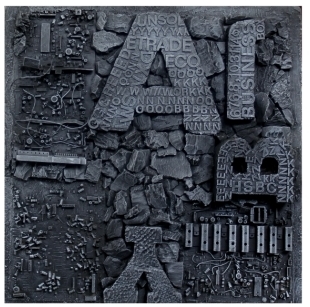
I asked Ike to tell me more about his interest on the internet and its impact of the lives of peoples the world over. He referred me to something he had written recently: My work is primarily inspired by the changes spurred by computer centered information technologies. Today, the Internet is a cultural tool that has had great impact in the mobility of our global culture. New breakthroughs in information technology have precipitated an unprecedented chain of events. Among these is the mass participation of people in an emerging global culture as mediated through information technology, primarily the Internet. New technologies have generally affected human expressions, including art. Artists seizing the inexhaustible possibilities available in new media continue to create new works reflecting the attitudinal change and shifting paradigms. The world-wide-web and the information disseminating from it have become common sources of inspiration and central agents of change, resulting in the re-negotiation of our global futures. My work sets out to shed light on the appropriations and re contextualizations of used and discarded information technology materials, as metaphor for the fluxes of our present global culture.
Power Tale
The work on which Ike Francis has invested a greater deal of time and emotional input is his installation “Power Tale”. Three glass cubes containing idealized representations of three cities. Each of them with anonymous, repetitive building blocks made of circuitry and each of them with an emblematic building or monument that identifies them: The Statue of Liberty in New York, the Monument to the African Renaissance in Dakar and the National Theatre in Lagos. The three icons stand out among the amorphous city layouts. They work as markers and they have a clear historical and cultural significance within their locations. This is not just pretty formalism. These works talk to the eye, but above all, they talk to the mind. They interpellate the viewer.
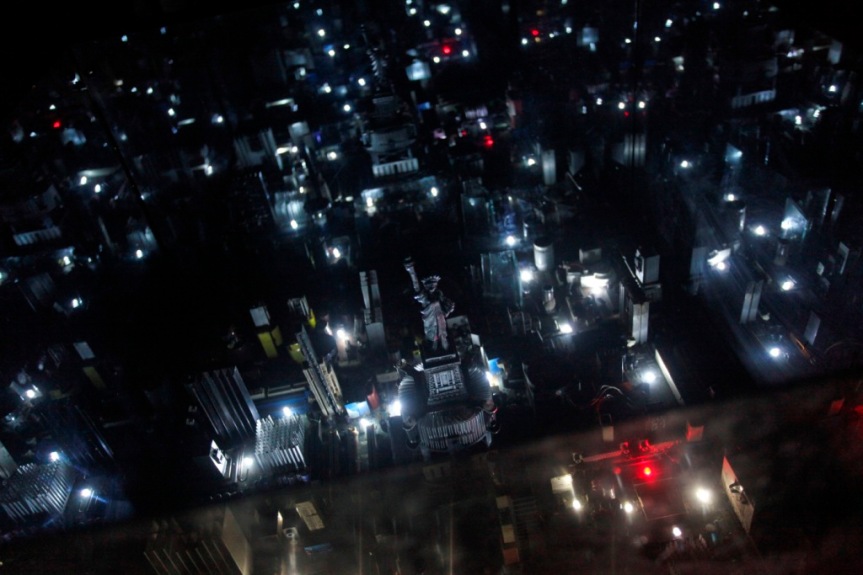
Power Tale (detail – NYC)
Ike explains how the Statue of Liberty and the Renaissance monument point upwards, towards the future, while the National Theatre in Lagos, is horizontal, static. The introduction of tiny LED lights adds a new dimension to the work. Those in New York are densely distributed reaching all corners of the box; in Dakar they are more thinly present. In Lagos there are only a few of them and, unlike in the boxes for New York and Dakar, the lights go on and off. This treatment of the problem of unsteady power supply in Lagos might be a little oversimplified, clichéd and literal, but definitely, it works well in this installation as a device to convey meaning without words.
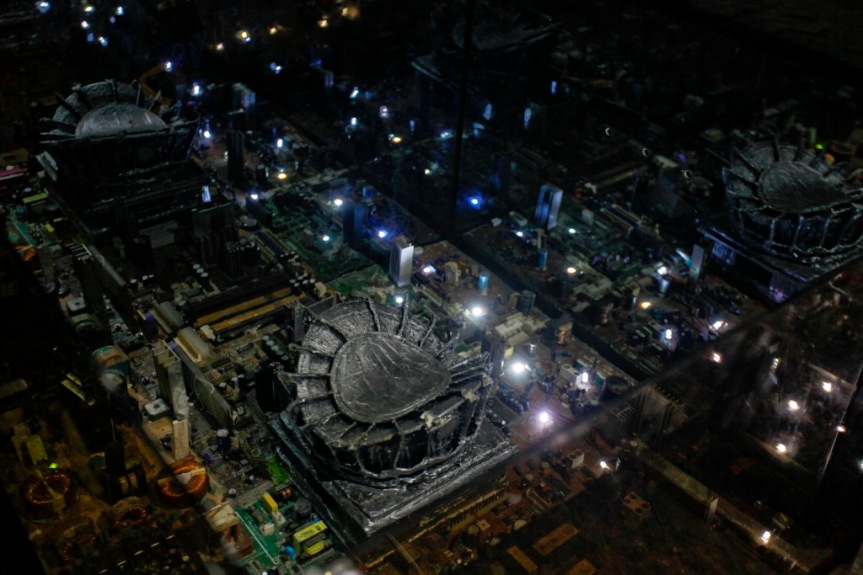
The fact that the works are encased in highly reflective glass boxes multiplies the visual effect and de-materializes the physical components of the piece. In the darkness, the motherboards, circuit panels and electronic junk become something else: skyscrapers, massive building blocks, densely stacked apartment buildings. There is a pervading illusion of perspective and distance. This is a piece that could equally be understood and enjoyed by an untutored child or a detached intellectual. It shows as a toy or a metaphor depending on the onlooker. It admits a multiplicity of readings.

These works will form part of his coming exhibition in Lagos. I am already looking forward to it.


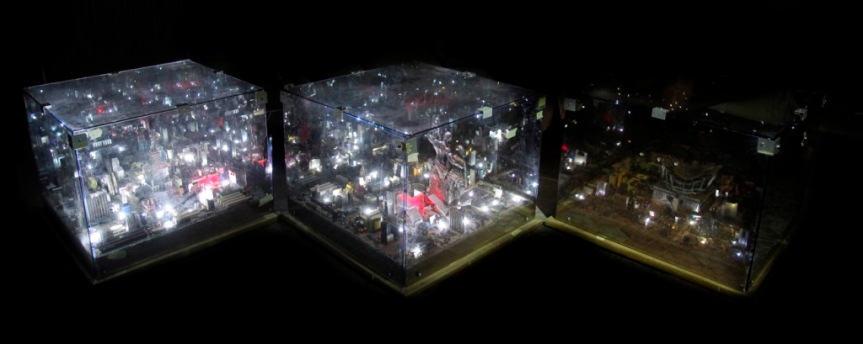
One thought on “Ike Francis OKORONKWO”